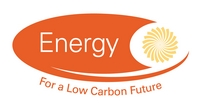Projects
Projects: Projects for Investigator |
||
| Reference Number | EP/I004564/1 | |
| Title | Advanced modelling for two-phase reacting flows | |
| Status | Completed | |
| Energy Categories | Renewable Energy Sources(Bio-Energy, Other bio-energy) 25%; Energy Efficiency(Transport) 30%; Not Energy Related 20%; Fossil Fuels: Oil Gas and Coal(Oil and Gas, Oil and gas combustion) 25%; |
|
| Research Types | Basic and strategic applied research 100% | |
| Science and Technology Fields | ENGINEERING AND TECHNOLOGY (Mechanical, Aeronautical and Manufacturing Engineering) 100% | |
| UKERC Cross Cutting Characterisation | Not Cross-cutting 100% | |
| Principal Investigator |
Dr ES (Edward ) Richardson No email address given Electronics and Computer Science University of Southampton |
|
| Award Type | Standard | |
| Funding Source | EPSRC | |
| Start Date | 01 October 2010 | |
| End Date | 13 November 2015 | |
| Duration | 62 months | |
| Total Grant Value | £598,558 | |
| Industrial Sectors | Energy; Transport Systems and Vehicles | |
| Region | South East | |
| Programme | Energy : Engineering | |
| Investigators | Principal Investigator | Dr ES (Edward ) Richardson , Electronics and Computer Science, University of Southampton (100.000%) |
| Industrial Collaborator | Project Contact , Sandia National Laboratories, USA (0.000%) Project Contact , Rolls-Royce PLC (0.000%) |
|
| Web Site | ||
| Objectives | ||
| Abstract | Burning oil-based fuels accounts for approximately 31% of UK greenhouse gas emission as well as being a major culprit in toxic, irritant and carcinogenic pollutants on a national scale (www.naei.org.uk). Nearly all forms of transport currently rely on liquid fossil fuels, and this use of liquid fuel is likely to continue; the storage technology for electricity and hydrogen is not good enough completely to replace all use of energy-dense liquid fuels in heavy goods vehicles and aircrafts. It is necessary, therefore, to explore ways of reducing emissions and raising efficiency in the combustion of liquid fuel.Engine designers want computer programs to help them invent ways to use less fuel and produce less pollution. But the computational models currently available are not adequate to predict some important effects: such as how blends of future carbon-neutral bio-fuels will change engine performance.When a liquid fuel is injected in an engine, three interacting processes take place. First the liquid and gas display turbulence, i.e. they swirl and mix chaotically. Second, there is evaporation of the many compounds in the liquid fuel into gaseous fuel vapour. Third, there is combustion, i.e. the fuel combines with oxygen to form hundreds of different intermediate and final combustion products.Turbulence, evaporation and combustion are fundamentally difficult to compute. One reason is that they happen among a wide range of spatial and temporal scales and therefore need to be calculated with a very fine resolution. Another is that so many different chemical compounds are involved. As a result, simulating even a few milliseconds of a highly turbulent combustion process far exceeds the resources of the largest supercomputers in the world.This research proposal aims to solve these problems by providing an accurate, practical and rigorous model for the injection and combustion of liquid fuel blends. High-resolution simulation data will be analysed to provide fundamental information on the coupling among gasses and liquids. The resultant data will be used to devise a model that synthesises turbulence, evaporation and combustion processes into a unifying framework. This new model has great potential because it can describe evaporation and mixing processes, even those occurring at the smallest scales of the flow, in detail and at an acceptable computational cost.The proposed model will not only be useful for designing advanced combustion systems. The challenging combination of physics found in spray combustion is also found in a number of industrial processes, including spray-drying in food and chemical industries, spray-painting, and spray-forming of metal components. This research will also demonstrate how the new modelling can be used to improve design of more efficient industrial processes.Finally some processes that play a role in turbulent spray combustion also play a critical role in environmental processes affecting local air quality and global climate change. Environmental regulators at present often have to make high-impact environmental policy decisions without an accurate way to predict the consequences. The proposed model will be applied in this arena to help to provide this badly needed information to policy-makers, thus contributing to sound environmental policy | |
| Data | No related datasets |
|
| Projects | No related projects |
|
| Publications | No related publications |
|
| Added to Database | 09/07/10 | |



